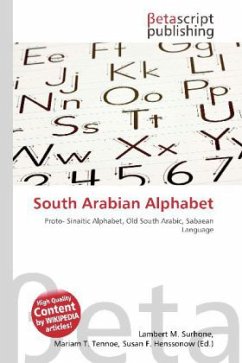Please note that the content of this book primarily consists of articles available from Wikipedia or other free sources online. The ancient South Arabian alphabet branched from the Proto-Sinaitic alphabet in about the 9th century BC. It was used for writing the Yemeni Old South Arabic languages of the Sabaean, Qatabanian, Hadrami ( a ram ), Minaean, Himyarite, and proto-Ge''ez (or proto-Ethiosemitic) in D mt. The earliest inscriptions in the alphabet date to the 9th century BC in Akkele Guzay, Eritrea and in the 8th century BC, found in Babylonia and in Yemen. Its mature form was reached around 500 BC, and its use continued until the 7th century AD, including Old North Arabian inscriptions in variants of the alphabet, when it was displaced by the Arabic alphabet. In Ethiopia it evolved later into the Ge''ez alphabet, which, with added symbols throughout the centuries, has been used to write Amharic, Tigrinya and Tigre, as well as other languages (including various Semitic, Cushitic, and Nilo-Saharan languages).
Bitte wählen Sie Ihr Anliegen aus.
Rechnungen
Retourenschein anfordern
Bestellstatus
Storno








